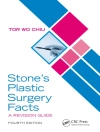Orthopedic trauma is largely limited to the stabilization and subsequent surgical management of fractures and dislocations, with most patients presenting to their local emergency departments with isolated injuries. Modern techniques and implants have made outcomes for these injuries more predictable. Intramedullary nailing, for example, has become standard treatment for a displaced fracture of the femoral shaft. These conditions can be managed by the majority of general ort- pedists being trained today. Interestingly, they most likely do not even understand or remember that this treatment evolved from the management of the polytrau- tized patient with fractures. The polytraumatized patient is, of course, a completely different matter. For many years, the only experience with these types of injuries was in casualties sustained by combatants during armed conflicts. Basic concepts such as anest- sia, blood transfusions, intravenous therapy, wound management, and even the development of nursing and the modern hospital were all learned and founded in armed conflicts such as the Crimean War, the Boer War, and World War I. The Second World War saw improvements in the management of both abdominal and extremity wounds, and this was further refined in the Korean and Vietnam Conflicts. These, however, were limited to saving lives and limbs that benefited from very basic care. Understanding even the most rudimentary physiological concepts now taken for granted eluded us, and this showed how limited kno- edge was at that time.
Innehållsförteckning
Epidemiology and Pathophysiology.- The Damage Control Approach.- Epidemiology of Polytrauma.- Pathogenetic Changes: Isolated Extremity Trauma and Polytrauma.- Pathogenetic Changes: Secondary Abdominal Compartment Syndrome.- Impact of Head and Chest Trauma on General Condition.- Patient Selection: Orthopedic Approach in Isolated Injuries.- Patient Selection: Orthopedic Approach in Polytrauma.- Phases of Damage Control.- Phase 0: Damage Control Resuscitation in the Pre-hospital and Emergency Department Settings.- Phase I: Abbreviated Surgery.- Phase II: The ICU Phase of Damage Control: Managing the Patient from Door to Door.- Phase III:?Second Operation Repair of All Injuries General and Orthopedics.- Phase IV: Late Reconstruction Abdominal Wall Closure: Staged Management Technique.- Phase IV: Late Reconstruction: Reconstruction of Posttraumatic Soft Tissue Defects.- The Role of Interventional Radiology.- Special Aspects of Damage Control.- Head Injuries in Polytrauma Patients.- Spinal Injuries in Polytrauma Patients.- Pelvic Fractures in Polytrauma Patients.- Vascular Injuries in Polytrauma Patients.- Pediatric Trauma and Polytrauma Pediatric Patients.- Damage Control in Elderly Polytrauma Patients.- Mass Casualties: Military and Civilian.- Complications and Outcomes.- Complications and Outcomes: Abdominal, General, and Extremity Complications.- Critical Decision Points in Managing the Open Abdomen.- Functional Long-Term Outcomes in Polytrauma Patients with Orthopedic Injuries.












